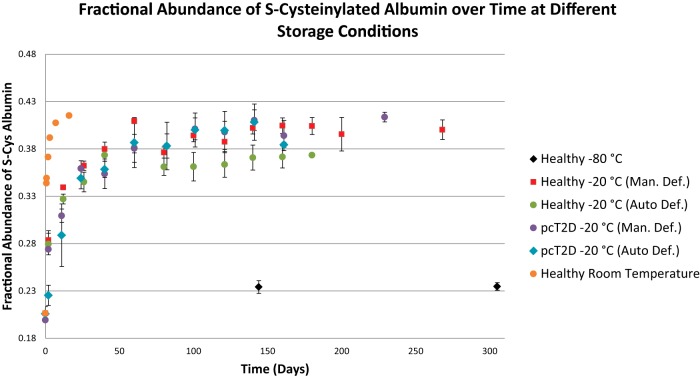Fig. 2.
Increasing abundance of S-cysteinylated albumin in plasma over time at −80 °C, −20 °C, and room temperature (25 °C). One sample was collected from a single healthy donor and a second sample was obtained from a single poorly controlled type 2 diabetic (pcT2D) with a history of coronary artery disease and myocardial infarction. Both samples were collected fresh and started on Day 0 at ∼0.20. Each sample was then aliquoted into two sets of three different vial types and stored in either an auto-defrost (n = 3) or a manual-defrost freezer (n = 3). An additional aliquot from the healthy donor was set aside for the room temperature time course. Auto-defrost freezers caused sublimation and/or evaporation of P/S water, resulting in sample dehydration (supplemental Fig. S7). Storage in such freezers is not recommended. Shown is the average ± S.E. of three aliquots per point (fewer for later auto-defrost freezer points as a result of sublimation-mediated sample loss), stored (to no effect; supplemental Fig. S8) in different types of vials with different headspaces and degrees of sealing. If no error bars are shown, only one aliquot was analyzed. The slight initial increase in the sample stored at −80 °C is likely due to the fact that the sample was measured and then aliquoted; during the aliquoting process the sample was at 4 - 25 °C for over an hour. The first time point for the room temperature sample was measured at 17.5 h.

